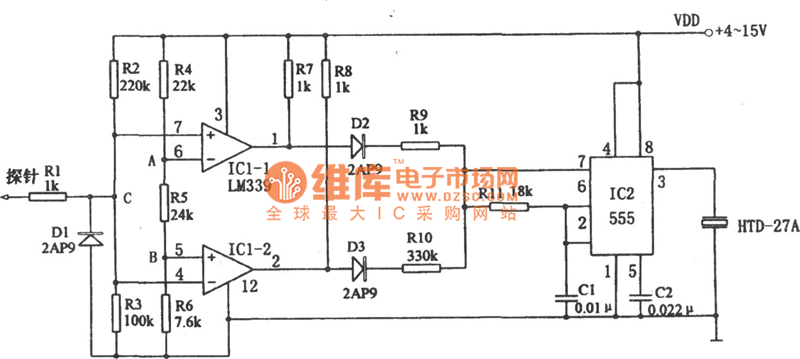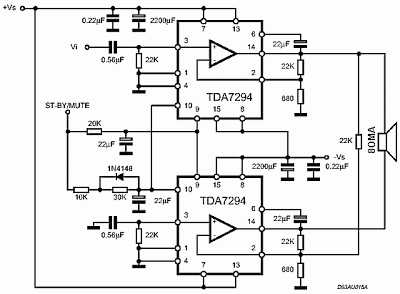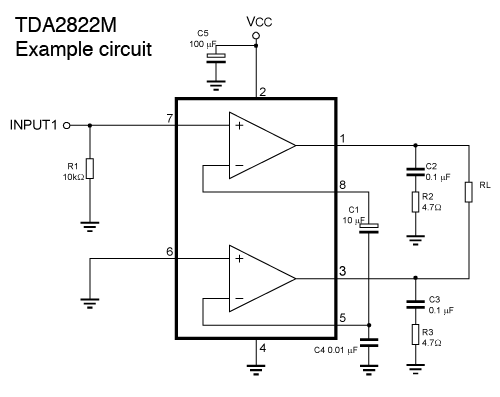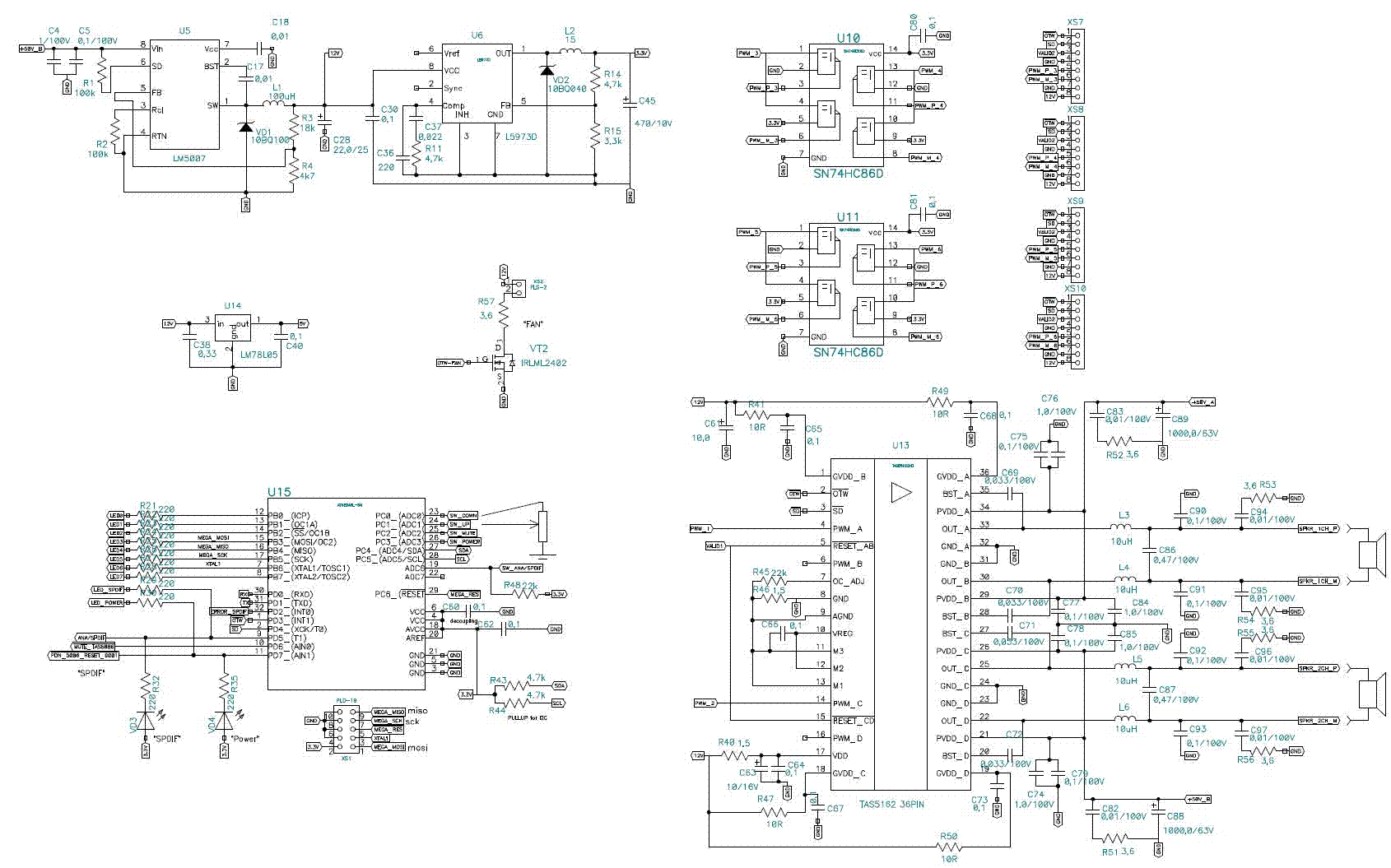
Variable audio oscillator 20hz to 20Khz

To achieve a 1000:1 sweep range, the voltage across the external resistors Ra and Rb must be reduced to nearly zero. This necessitates that the maximum voltage on control pin 8 surpasses the voltage at the top of Ra and Rb by several hundred millivolts. The circuit accomplishes this by incorporating a diode to decrease the effective supply voltage on the 8038. Additionally, the large resistor connected to pin 5 aids in minimizing duty cycle fluctuations during the sweep.
The described circuit utilizes the 8038 precision waveform generator, which is known for its ability to produce high-quality sine, square, triangular, and sawtooth waveforms. In this application, achieving a 1000:1 sweep range is critical for applications requiring extensive frequency modulation or signal variation.
To implement this, external resistors Ra and Rb are strategically selected to form a voltage divider that regulates the voltage levels seen by the control pin 8 of the 8038. The requirement for the voltage on pin 8 to exceed the voltage at the top of Ra and Rb by a few hundred millivolts ensures that the circuit can effectively control the frequency sweep without distortion or loss of signal integrity.
The inclusion of a diode in the circuit serves to clamp the supply voltage, effectively reducing it to a level that is more manageable for the 8038's operation. This diode must be selected based on its forward voltage drop characteristics to ensure that the voltage reduction meets the necessary thresholds for stable operation.
Furthermore, the large resistor connected to pin 5 plays a pivotal role in stabilizing the duty cycle of the output waveform. Variations in the duty cycle can lead to inconsistent waveform generation, which is detrimental in precision applications. By using a sufficiently large resistor, the circuit minimizes these variations, thereby enhancing the overall performance and reliability of the waveform output during the sweep process.
Overall, the careful design and selection of components within this circuit enable it to achieve the desired sweeping characteristics while maintaining signal integrity and stability.To obtain a 1000:1 Sweep Range, the voltage across external resistors Ra and Rb must decrease to nearly zero. This requires that the highest voltage on control pin 8 exceed the voltage at the top of Ra and Rb by a few hundred millivolts.
The circuit achieves this by using a diode to lower the effective supply voltage on the 8038 The large resistor on pin 5 helps reduce duty cycle variations with sweep.
The described circuit utilizes the 8038 precision waveform generator, which is known for its ability to produce high-quality sine, square, triangular, and sawtooth waveforms. In this application, achieving a 1000:1 sweep range is critical for applications requiring extensive frequency modulation or signal variation.
To implement this, external resistors Ra and Rb are strategically selected to form a voltage divider that regulates the voltage levels seen by the control pin 8 of the 8038. The requirement for the voltage on pin 8 to exceed the voltage at the top of Ra and Rb by a few hundred millivolts ensures that the circuit can effectively control the frequency sweep without distortion or loss of signal integrity.
The inclusion of a diode in the circuit serves to clamp the supply voltage, effectively reducing it to a level that is more manageable for the 8038's operation. This diode must be selected based on its forward voltage drop characteristics to ensure that the voltage reduction meets the necessary thresholds for stable operation.
Furthermore, the large resistor connected to pin 5 plays a pivotal role in stabilizing the duty cycle of the output waveform. Variations in the duty cycle can lead to inconsistent waveform generation, which is detrimental in precision applications. By using a sufficiently large resistor, the circuit minimizes these variations, thereby enhancing the overall performance and reliability of the waveform output during the sweep process.
Overall, the careful design and selection of components within this circuit enable it to achieve the desired sweeping characteristics while maintaining signal integrity and stability.To obtain a 1000:1 Sweep Range, the voltage across external resistors Ra and Rb must decrease to nearly zero. This requires that the highest voltage on control pin 8 exceed the voltage at the top of Ra and Rb by a few hundred millivolts.
The circuit achieves this by using a diode to lower the effective supply voltage on the 8038 The large resistor on pin 5 helps reduce duty cycle variations with sweep.





